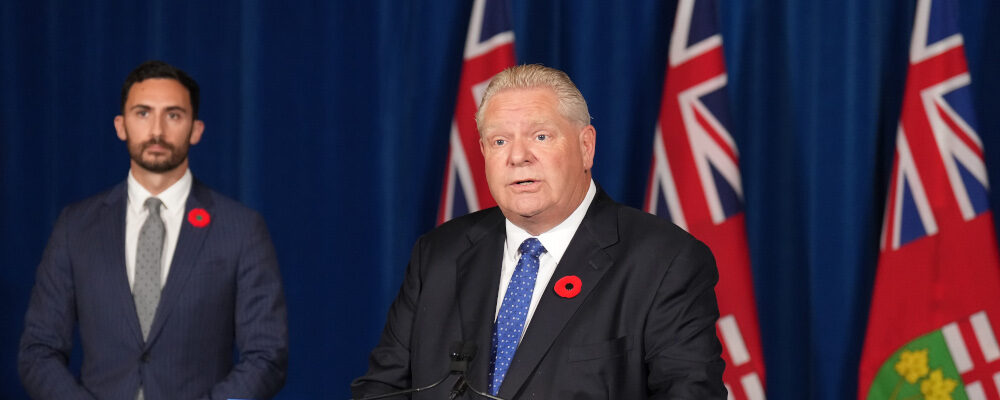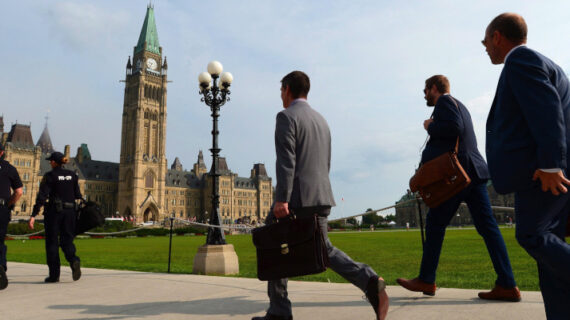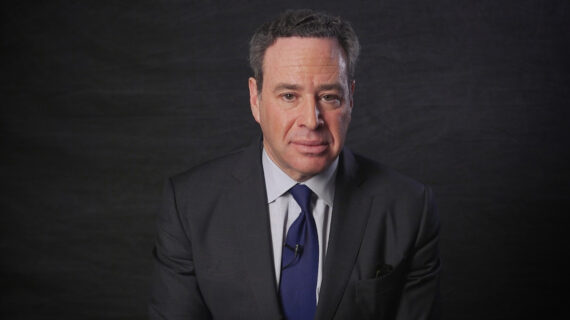Canada’s notwithstanding clause has never been far from the national spotlight. Contained in section 33 of the Charter, the clause allows Parliament and provincial legislatures to “expressly declare in an Act of Parliament or of the legislature… that the Act or a provision thereof shall operate notwithstanding” sections 2 and 7-15 of the Charter—the sections listing fundamental freedoms, legal rights, and equality rights.
Since 2017, the clause has been invoked in seven provincial bills, five of which have passed into law. This occurred following a period of relative neglect: after the clause was invoked many times (mostly by Quebec) between 1982 and 1992, only two bills invoking the clause passed between 1993 and 2017.
Earlier this month, Ontario invoked the notwithstanding clause in Bill 28, the Keeping Students in Class Act. The law was designed to prevent CUPE education workers from striking, though after the workers walked off the job anyway, Ontario repealed the legislation to continue negotiations. Along with two high-profile Quebec laws invoking the clause—Bill 21 (2019), which prevents public workers from wearing religious symbols, and Bill 96 (2022), which imposes additional French-only language provisions to public and private life—the Ontario law led many commentators to call for limits on the clause’s use.

In particular, there is a growing tendency to distinguish between “pre-emptive” laws invoking the clause before a judicial decision and “reactive” laws invoking the clause in response to one, with suggestions that only the latter should be permissible. Evoking no less an authority than Peter Lougheed, who in 1991 recommended a constitutional amendment prohibiting the pre-emptive use of the clause, the Toronto Star editorial board condemned pre-emptive uses as an “undemocratic exclusion of the judiciary.”
David Lametti, the federal Minister of Justice, took specific issue with Ontario’s “pre-emptive” legislation: The notwithstanding clause, Lametti said, “was meant be a last word for a legislature to exercise parliamentary sovereignty… if it’s used at the beginning, it guts Canadian democracy and means the Charter doesn’t exist.”
Given these comments, readers might be surprised to learn that the pre-emptive use of the notwithstanding clause is the historical norm. Even if one excludes Quebec’s (obviously pre-emptive) “omnibus” application of the notwithstanding clause to every provincial law from 1982-1985, provincial legislatures have passed 22 laws invoking the notwithstanding clause. Of these 22 laws, only four—Saskatchewan in 1986 and 2018, Quebec in 1988, and Ontario in 2021—have been in direct response to a judicial decision.
The vast majority of the time the clause has been invoked (82 percent), legislatures have not “reacted” to a new judicial decision. Nor is this an especially new phenomenon: before the recent spate of post-2018 laws invoking the clause, 15 out of 17 (88 percent) of laws invoking the clause had been pre-emptive uses. If Lametti is indeed correct, then we’ve been living in a gutted, Charter-free democracy for quite some time.
While I have used the “reactive” vs. “pre-emptive” distinction thus far, it is a false dichotomy. True, some uses of the clause are obviously pre-emptive; in particular, during Quebec’s omnibus use from 1982-1985, there was no case law to which the clause could “react.” Likewise, certain uses are obviously reactive: Saskatchewan’s 2018 School Choice Protection Act and Ontario’s 2021 Protecting Elections and Defending Democracy Act were both drafted in immediate response to a judicial decision invalidating an existing legislative scheme.
However, the distinction falls apart when we look at the three most recent “pre-emptive” laws: Quebec’s Bills 21 and 96 and Ontario’s Bill 28. None of these bills were drafted in immediate response to a specific judicial decision, yet in each case, the invocation of the notwithstanding clause is an obvious reaction to existing Supreme Court precedent. Quebec’s Bill 21 invokes the clause because it is likely at odds with established precedent on women’s equality rights and religious freedom; much of Bill 96 would likely conflict with the Supreme Court’s jurisprudence on freedom of expression; and Ontario’s Bill 28 would almost certainly have fallen afoul of the right to freedom of association, into which the Supreme Court incorporated (or perhaps more accurately “invented”) the right to collective bargaining and the right to strike in 2007 and 2015.
Thus what constitutes a “reaction” is not immediately obvious. We have nearly 40 years of Supreme Court Charter precedent, constituting hundreds of cases. If a legislature invokes the notwithstanding clause in a law that is inconsistent with that precedent, that law is no less a reaction than in the more obvious “reactive” cases listed above.
It is odd that those opposed to “pre-emption” would prefer if the clause were invoked in the immediate aftermath of a judicial decision. Why is legislation drafted in a knee-jerk response to a single court case preferable to one that invokes the clause in response to years of precedent? Moreover, if we could somehow ban pre-emptive uses, would there be a time limit on the decision to which a government was “reacting”? Could the notwithstanding clause only be invoked a week after a judicial decision? A month? A year?
Even if such a time limit could be determined, the implications of forbidding pre-emptive uses would lead to a strange situation: even if a legislature knew its law would eventually be struck down by the Supreme Court, it would have to pass that law without the notwithstanding clause, potentially wait several years until the Supreme Court confirms what we all know, and then pass the law invoking the clause. This is obviously impractical for any time-sensitive issue such as a looming strike by public sector education workers. It would severely limit the scope of legislation to which the notwithstanding clause could apply, essentially excluding its application to any issue involving an urgent matter of public policy.
And it is hard to escape the conclusion that this is precisely the point: those who purport to oppose the pre-emptive use of the notwithstanding clause really just oppose the very existence of the clause itself. If this seems too cynical, I would ask: is there a single opponent of pre-emptive use of the notwithstanding clause who has, in the past, approved of an instance in which the law was used “reactively”?
Opposing the pre-emptive use of the clause is not new; in 1991, Peter Lougheed argued that the Constitution should be amended to prevent the clause from being used “until such time that all rights of appeal are exhausted and a final judicial determination is rendered.” While I have stated why this would be impractical, at least Lougheed recommended amending the constitution.
Others have called for amendment through the back door, urging the Supreme Court to reverse its precedent that gave legislatures wide discretion to invoke the clause. But abandoning that precedent would be a mistake, not least because it accords with the actual text of section 33. As the Court unanimously wrote in 1988, there is only one “essential requirement of form laid down by s. 33”: that any invocation of the notwithstanding clause “must be an express declaration that an Act or a provision of an Act shall operate notwithstanding” certain Charter provisions (my emphasis).
Any supposed requirement that the notwithstanding clause can only be used reactively is thus at odds with the constitutional text, Supreme Court jurisprudence, and the history of its actual use. If we wish to debate the merits of the clause itself, there are forceful and considered commentators who have recently taken up the case for its defence and its prosecution. But such debate will be improved if we remove the specious and unworkable distinction between pre-emptive and reactive uses. If asked to rule on the distinction, the Supreme Court should reject it out of hand.




